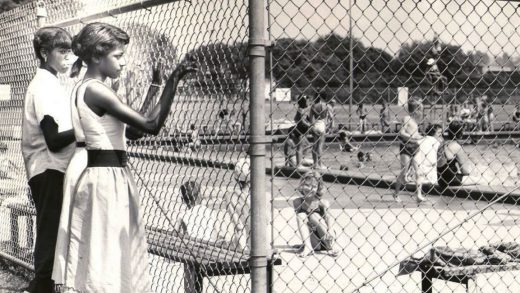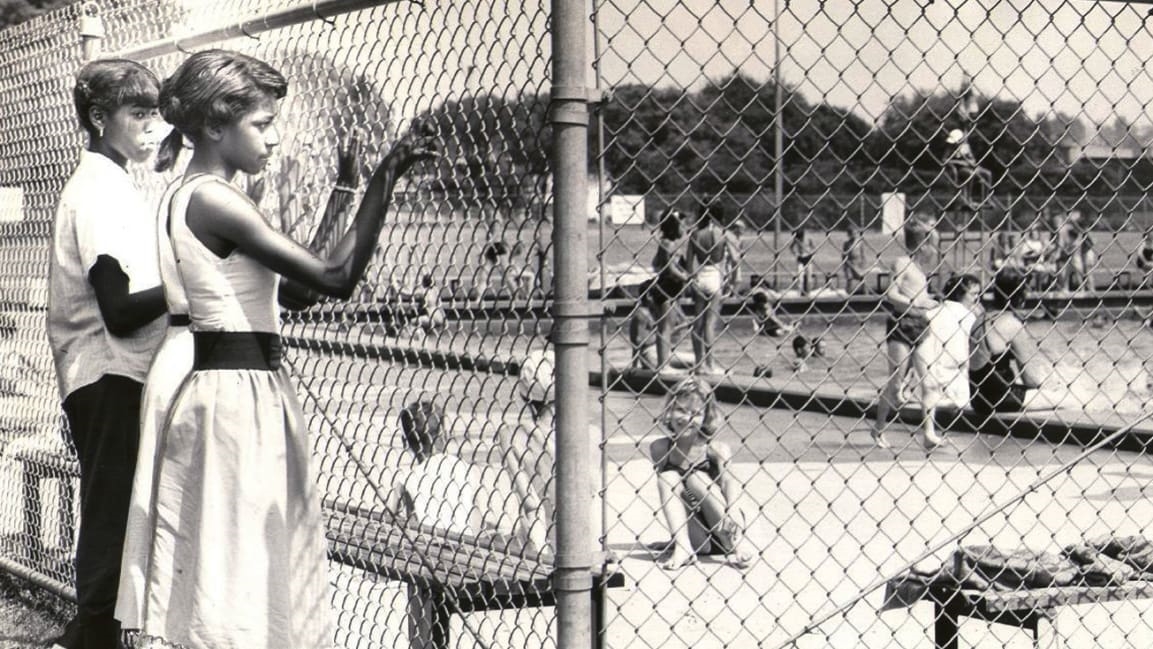Black children are almost 6 times more likely to drown than white children. Segregated pools are to blame
Rhonda Harper remembers walking up to the community swimming pool two blocks from her house, hand in hand with her mom. It was the early ’70s, and she was just a little Black girl eager to cool off in the heat of Kansas City, Missouri, summer. “I remember them telling my mom I couldn’t go,” she says.
During much of the 20th century, public swimming pools played a key role in American communities. Harper, who is now an activist, surfer, and founder of Black Girls Surf, says she learned how to swim because her father was in the U.S. Coast Guard, but few swimming pools were accessible to Black people—and the consequences of this racial discrimination continue to be felt today.
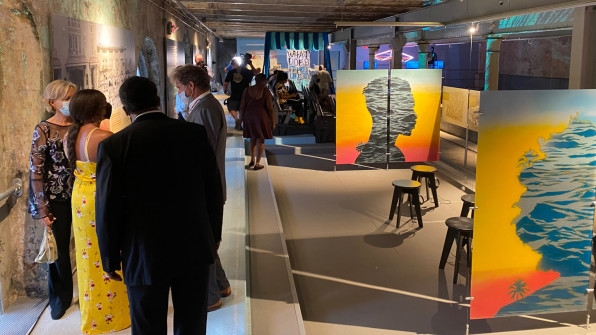
Photo: courtesy “15 Minutes” Inc. for Fairmount Water Works]
A new exhibition in Philadelphia’s Fairmount Water Works shines a light on the segregated history of swimming pools in America. Titled Pool: A Social History of Segregation, it portrays the lasting impact that racial discrimination in pools has had on Black communities. According to a 2017 study commissioned by the USA Swimming Foundation and done by researchers at the University of Memphis, 64% of Black children in the United States can’t swim (compared to 40% for white children), and they are almost six times more likely to drown in a swimming pool than white children. Pool seeks to bring awareness to that disparity.
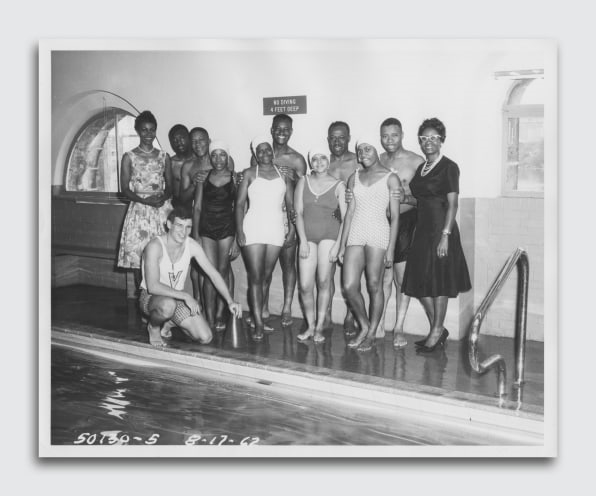
[Photo: of the Fairmount Water Works and Philadelphia Water Department Collection]
Philadelphia opened the first outdoor municipal pool in the United States in 1883, and it has the largest number of public pools per person (more than 70) of any major American city. The new exhibition is located in the former Kelly Pool—built in 1961 by John B. Kelly Sr., father of famed actress Grace Kelly, and a three-time Olympic gold medalist. The exhibition was set to open at the beginning of September, but the day before, the building was flooded during Hurricane Ida. Luckily, a digital iteration has been created to raise awareness, while the interior is being restored (it is set to reopen in late December).
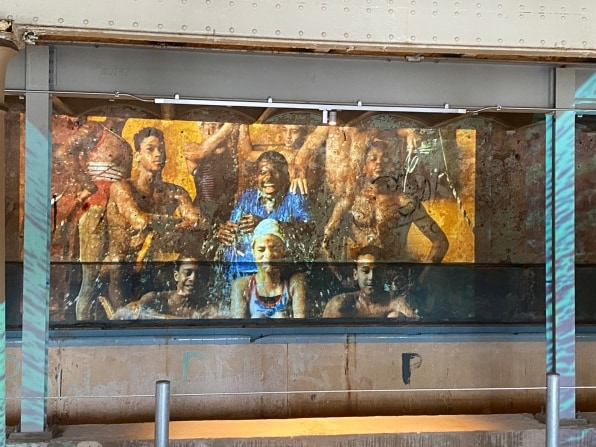
[Photo: courtesy Fairmount Water Works]
The waters of America’s public pools have long reflected the country’s deep racial divide. The history of that racial segregation begins in the 1920s, and plays an important role in the exhibition. (A graphic timeline portrays the revolting moment when, in 1964, a white hotel manager in St. Augustine, Florida, poured acid in a pool where Black and white activists were swimming together in protest.)
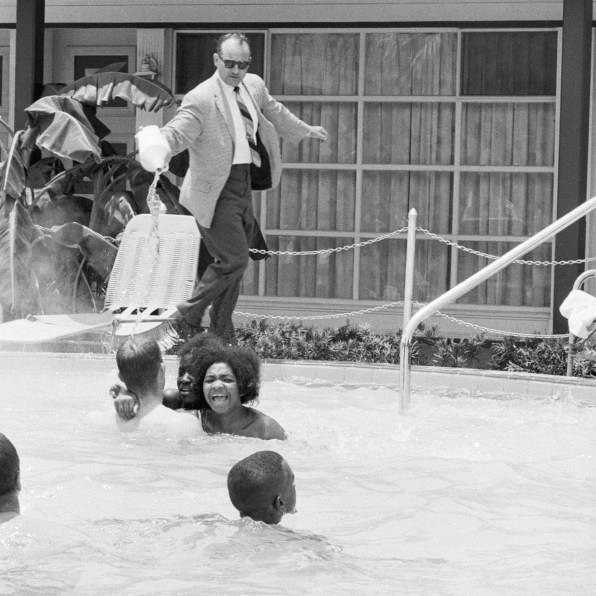
[Photo: Bettmann/Getty Images]
The exhibition juxtaposes this history through a host of contemporary artworks highlighting incredible achievements by Black swimmers, like the Harlem Honeys & Bears—an all-Black synchronized swimming team that was founded in the late ’70s to teach seniors water survival skills and therapeutic water exercises. Or teenage sisters Rachel and Brianna Holmes, two Black artistic swimmers who were captured by underwater photographer Liz Corman. “Part of Pool was to show beautiful Black bodies swimming,” says exhibition curator Victoria Prizzia.
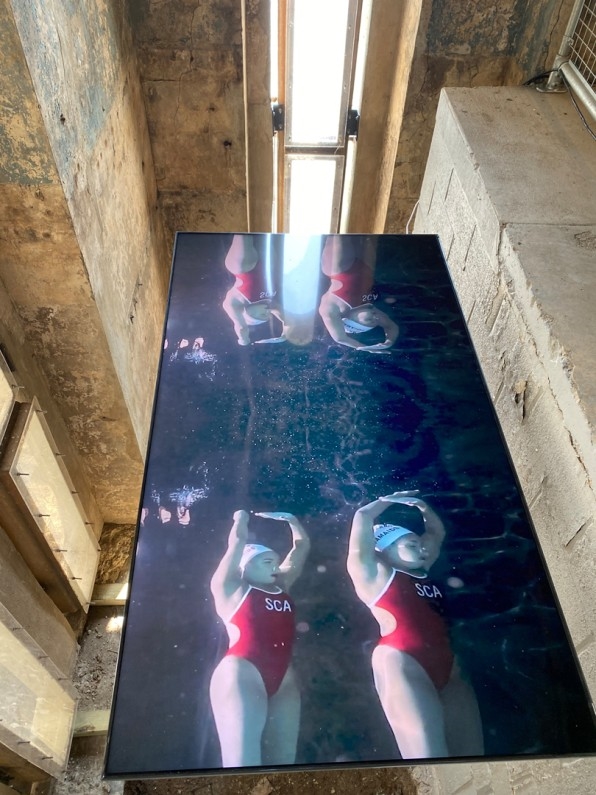
[Photo: courtesy Fairmount Water Works]
One of the swimming lanes of the former Kelly Pool is also bathed in projections of light mirroring the effect of water. Created by artist Azikiwe Mohammed, the installation is framed by two Black lifeguard sculptures sitting on diving boards on either end. “A lot of his work is focused on reclaiming spaces,” says Prizzia, noting Mohammed struggled to find ebony-colored mannequins.
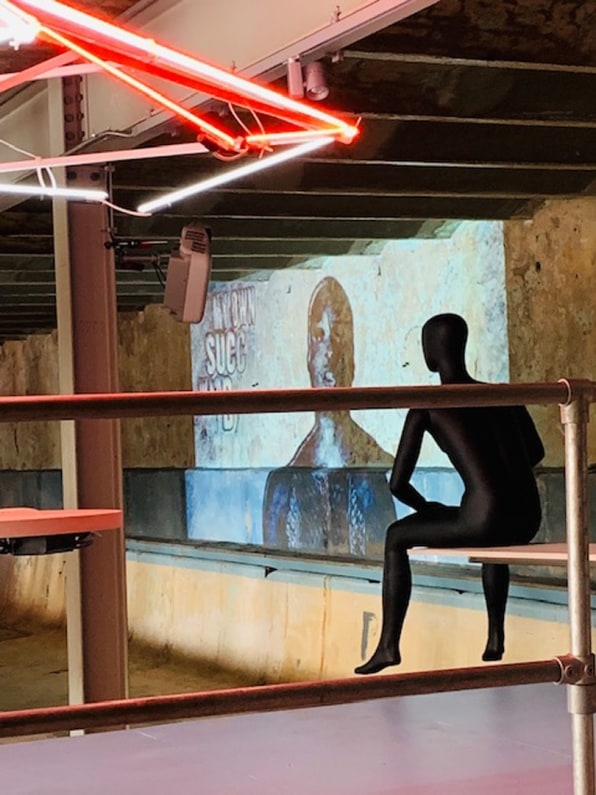
[Photo: courtesy Fairmount Water Works]
While it is true that Black children are more at risk in the water than white children, the hackneyed idea that “Black people can’t swim” has been bolstered by a lack of access and representation in sporting events from Olympic swimming to surfing. “I wanted to counter those stereotypes and myths that persist by inviting artists to come and interpret some aspects of this story for themselves,” says Prizzia, who brought in voices like Miriam Lynch of Diversity in Aquatics, and Angela Beale-Tawfeeq, a professor who started a program that teaches water safety and social responsibility to city children in minority populations.
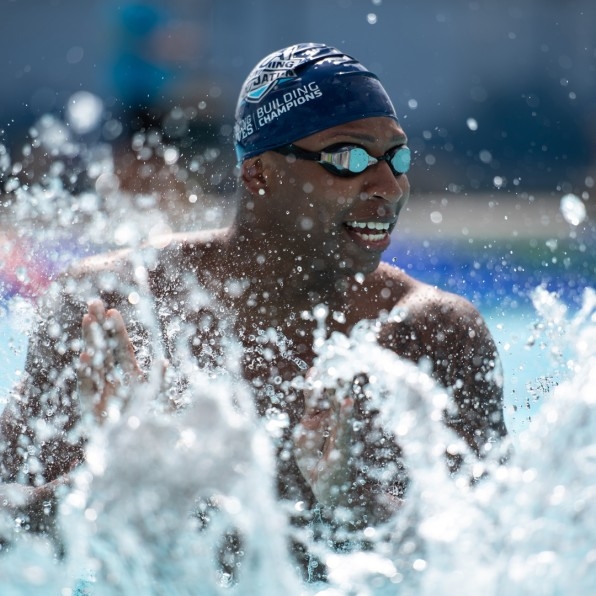
[Photo: Mike Lewis/USA Swimming/courtesy Fairmount Water Works]
One of those voices is Rhonda Harper, who was an advisor for the exhibition. Harper has experienced the effects of pool segregation firsthand. When her family moved from Kansas City to San Jose, California, in the 1970s, she says her parents looked for a home with a pool, so the kids wouldn’t be subjected to the “outside aggression” they had experienced back home. “We didn’t want to have that same feeling of being different or being outcasted,” Harper says.
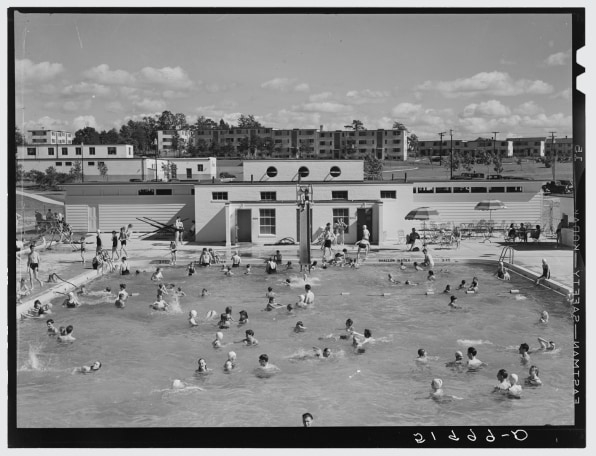
[Photo: Library of Congress Photo Archive/courtesy Fairmount Water Works]
Eventually, Harper discovered the ocean and fell in love with surfing. After years spent riding waves, she noticed she was often the only Black person—let alone the only Black woman—in the ocean. In 2014, she founded Black Girls Surf to diversify a white-dominated sport and help girls and young women of color become elite surfers and compete on a professional level. “Let’s create something to showcase Black talent,” she thought. She has since coached over 400 women, including Khadjou Sambe, who went on to become Senegal’s first female professional surfer.
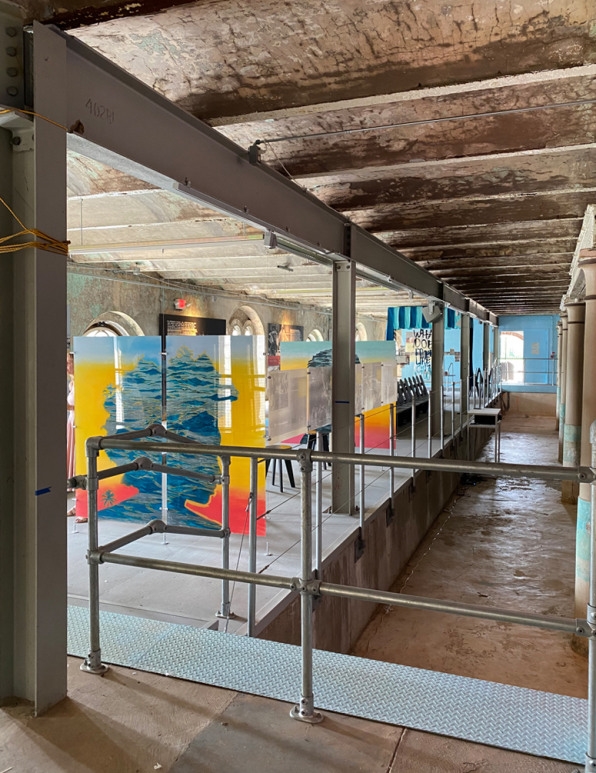
[Photo: courtesy Fairmount Water Works]
For Harper, the fact that surfing remains a white-dominated sport—and that fewer Black children know how to swim compared to white children—is a direct consequence of segregated pools in America. “When I was in high school, you had to take a swim class. They took that away,” she says.
Right now, swimming is not mandatory in American schools (New York lawmakers proposed a bill that would make swimming and water-safety education a mandatory part of the state’s K-12 curriculum, but the bill never reached the floor for a vote.) “The younger generation needs to think about going to the school’s district and putting swimming back into the curriculum of schools that have pools,” Harper says.
In many ways, the goal of Pool is the same. Racial segregation has perpetuated for generations the stereotype that Black people can’t swim. “So many issues we don’t have answers to,” says Prizzia. “This one? We know what the answer is. Teach them how to swim.”
(16)

